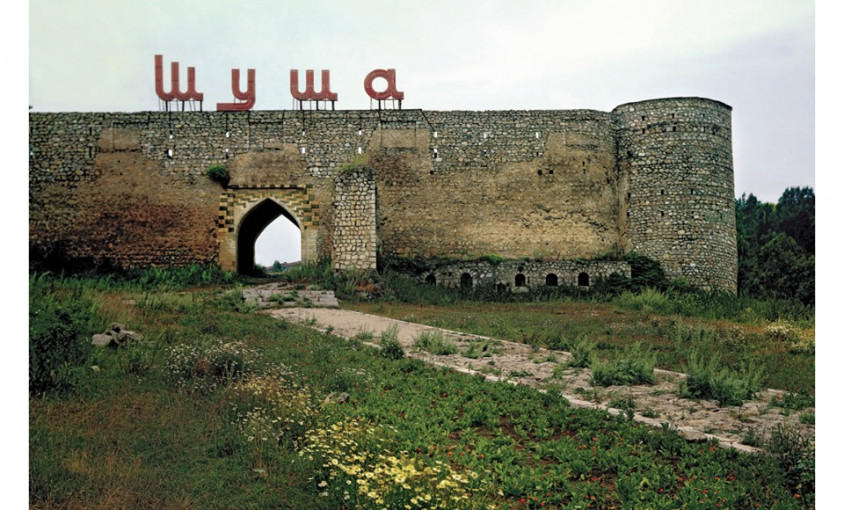Karabakh's Azerbaijani community decries Armenianization of region

By Abdul Kerimkhanov
Nagorno-Karabakh’s Azerbaijani Community have voiced their concerns over increased Armenianization of Azerbaijan’s historical monuments in the region occupied by Armenian forces in the early 1990s.
In a statement issued on 25 January, the community members stated that the regime set up in Nagorno-Karabakh have been conducting the Armenianization policy under the cover of “restoring” the historical and cultural monuments in Azerbaijan’s occupied territories.
In particular, the community said that Armenian separatists in the region are vandalizing Shusha fortress in Nagorno-Karabakh under the guise of restoring it. The fortress was built by Panahali khan Javanshir, the founder of Karabakh Khanate in the 18th century. Earlier, the same thing happened to the Upper Govharagha mosque in Shusha considered an architectural pearl of Nagorno Karabakh which Armenians have renamed the “Persian cultural center”.
The Community didn’t rule out that in the future the same vandalism will be applied to the historical monuments situated in Aghdere and Lachin regions.
"It is well known that thousands of our cultural, historical and religious monuments in Azerbaijan’s occupied territories have been subjected to the Armenian aggression. Some parts of these monuments have been completely erased from the earth. And the remaining monuments have been brought into unfit condition," the message reads.
As noted in the statement, along with occupying Azerbaijani lands, subjecting Azerbaijani people to genocide and displacing thousands of people from their native land, Armenia also destroys Azerbaijani historical monuments.
"Currently Armenia implements pseudo and false “repair and rehabilitation” works in order to erase this stain from itself," the statement reads.
The Community reminded that all the monuments situated in occupied territories had been erected by Azerbaijanis and bear handprints of country’s ancestors. Furthermore, they called on the international organizations to take measures to stop Armenia’s actions that set a precedence of jeopardizing cultural-historical heritage worldwide.
The community members stressed that the destruction of Azerbaijani heritage are in stark contrast with obligations undertaken by Armenia to UNESCO and are also the manifestation of this country’s attempts to deceive the international community and to give a cultural and civil veneer to its vandalism actions, the statement concluded.
Histrorically, Karabakh was a part of the ancient Azerbaijan state-Caucasian Albania, which mostly consisted of Turks and Caucasian tribes.
The examples of material culture, numismatic evidences discovered in Khankendi, Aghdere, Khojavend, Shusha of Upland Karabakh, Berde, Terter, Aghdam, Aghjabedi, Fizuli,Beylegan as well as Lachin and Kalbajar of Lowland Karabakh during investigations reflect thoroughly the ancient material culture of Karabakh, ethno-cultural state, social-economic standards of people, their living conditions, and generally the economic, social, and cultural history of this part of Azerbaijan.
The main population of this region consisted of ethnic groups belonging to the Caucasian language group and being of Turkish origin living in the area between river Aras and Great Caucasus for thousand years by origin, language, and culture.
---
Abdul Kerimkhanov is AzerNews’ staff journalist, follow him on Twitter: @AbdulKerim94
Follow us on Twitter @AzerNewsAz
Here we are to serve you with news right now. It does not cost much, but worth your attention.
Choose to support open, independent, quality journalism and subscribe on a monthly basis.
By subscribing to our online newspaper, you can have full digital access to all news, analysis, and much more.
You can also follow AzerNEWS on Twitter @AzerNewsAz or Facebook @AzerNewsNewspaper
Thank you!
